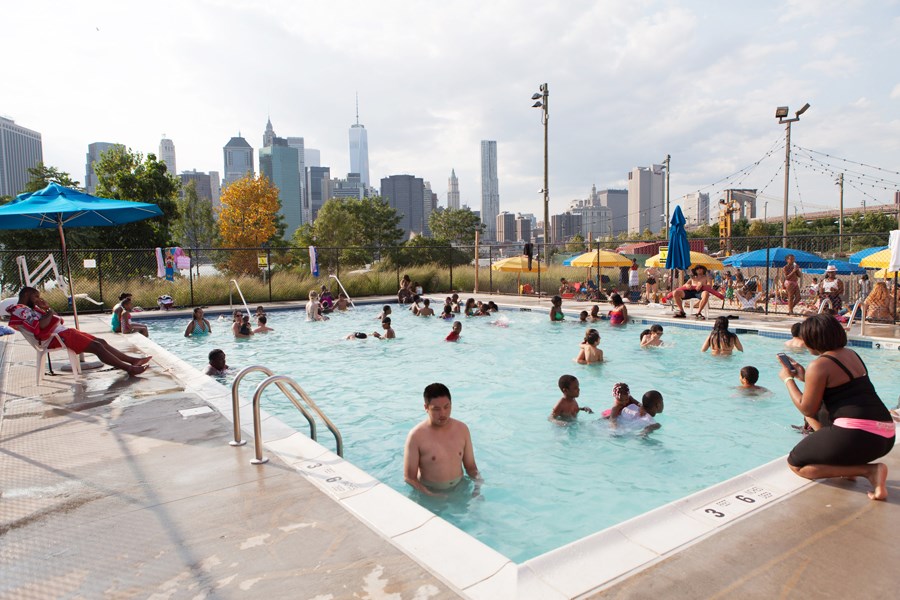They’re being billed as a short-term fix to address a long-standing gap.
Vancouver Park Board commissioners received more information Monday on the possibility of installing pop-up pools in areas of the city where residents don’t have easy access to beach or other aquatic facilities.
Pop-up pools are essentially containers filled with water that can be built either above or below ground.
Planning and building the pop-up pools is part of a larger, more long-term strategy called VanSplash, which aims to identify areas that lack aquatic infrastructure and determine ways to fill those gaps.
“We saw this as something that is a new, very early, very fast-to-deliver facility that could be part of an aquatic strategy once gaps are identified,” said Malcolm Bromley, the city’s general manager of parks and recreation. “We could have a temporary pool in an area while we’re getting our act together to plan for a permanent pool.”
Park board manager of research and planning Dave Hutch cited one facility in particular as being “one of the best examples” that staff have researched to date.
Located in New York City, the Brooklyn Bridge Park pop-up pool is a 10-by-20 metre, above-ground pool that can accommodate about 200 swimmers. It opens in June, closes in September and is free of charge. Its primary function is to serve leisure swimming and beginner-level swimming lessons, and came at a price of $1 million for the pool alone.
Those costs increase to $2 to $2.5 million when factoring in the surrounding infrastructure (change rooms, showers) and access to water, sewer and electrical services.
The pool opened in 2012 and operates on a five-year term. It’s surrounded by temporary trailers and converted containers that serve as change rooms, washrooms, showers and a small concession.
The land it’s situated on will be converted back to park-related uses once the pool is gone.
Another option staff researched is a “macro-sea mobile pool” model of pop-up pool. One example in New York City saw a series of three repurposed shipping containers used that can fit 30 people. Another example, used in Detroit in the 1970s and 1980s, saw a semi-trailer filled with water that moved throughout the neighbourhoods in that city.
Larger, more expensive types of facilities, known as temporary competition pools, were also explored by staff. They’re typically used at swim meets as a practice facility for water polo and synchronized swimming, are about 50 metres in length and range in price between $3 and $5 million.
Hutch noted the annual operating costs for a pop-up pool would be about $120,000, funds that would cover staffing and set-up and teardown costs. The pool would likely be in place for a five-year term, and the ideal location would be situated in an existing park or near a community centre. Connectivity to transit and bike routes, along with parking and how the pool operation would impact other park amenities, are also considerations.
Both staff and commissioners were careful not to attach a fixed date or location for a potential pop-up pool. Instead, they suggested the pool “could be” in place by next summer.
Park board staff will present a follow-up report this fall with more cost implications, locations and funding availability for the pop-up pools. A report centred around the entirety of the VanSplash strategy will be ongoing over the next 10 months.
In the meantime, the city is asking for feedback via an online survey located at vancouver.ca.
@JohnKurucz



